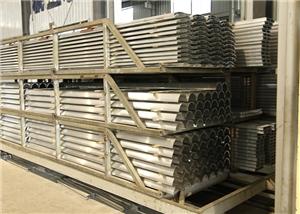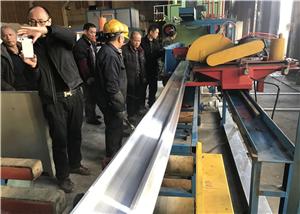What is the difference between casting and extrusion of aluminum?
Casting vs. Extrusion:
Aluminum Shaping TechniquesAluminium, a versatile and lightweight metal, is widely used in various industries due to its excellent properties. Its shaping into desired forms involves several processes, with casting and extrusion being two of the most common. Understanding the differences between these two techniques is crucial for selecting the appropriate method for a specific application.
Casting
Casting involves pouring molten aluminium into a mold. As the metal cools and solidifies, it takes the shape of the mold. This process is ideal for creating complex shapes with intricate details.
Key characteristics of casting: Complex shapes: Casting can produce parts with intricate designs and undercuts that would be difficult to achieve through other methods. Thick sections: Casting is well-suited for creating parts with thick walls and substantial mass. Limited length-to-diameter ratios: The length of cast parts is often limited due to the constraints of the mold. Types of casting: Sand casting: Molten metal is poured into a sand mold. Die casting: Molten metal is injected into a metal die under high pressure. Permanent mold casting: Molten metal is poured into a reusable metal mold.
Extrusion Extrusion involves forcing a heated aluminium billet through a die with a specific shaped opening. The billet is compressed and forced to take the shape of the die opening as it exits. Key characteristics of extrusion: Long, continuous profiles: Extrusion is ideal for creating long, continuous shapes with consistent cross-sections. Precise dimensions: Extrusion can produce parts with very tight tolerances. Good strength-to-weight ratio: Extruded parts often have excellent mechanical properties. Types of extrusion: Hot extrusion: The billet is heated to a high temperature before being extruded. Cold extrusion: The billet is extruded at room temperature. Choosing the Right Process The choice between casting and extrusion depends on several factors, including: Part geometry: Complex shapes with undercuts are better suited for casting, while long, continuous profiles are ideal for extrusion. Volume: For high-volume production, extrusion is often more cost-effective. Tolerances: Extrusion can produce parts with tighter tolerances than casting. Mechanical properties: The desired mechanical properties of the final part will also influence the choice of process. Role of Machinery Aluminium Profile Manufacturing Machine factories play a crucial role in both casting and extrusion processes. They provide the necessary machinery, such as extrusion presses, die casting machines, and furnaces, to produce aluminium components efficiently. Aluminium profile cutting machine manufacturers in China are particularly important in the extrusion process. Their machines are used to cut extruded profiles to precise lengths, ensuring that the final product meets the customer's specifications. In conclusion, casting and extrusion are two essential processes for shaping aluminium. The choice between the two depends on a variety of factors, including part geometry, volume, and desired properties. By understanding the strengths and limitations of each process, engineers and manufacturers can select the most appropriate method for their specific application.




